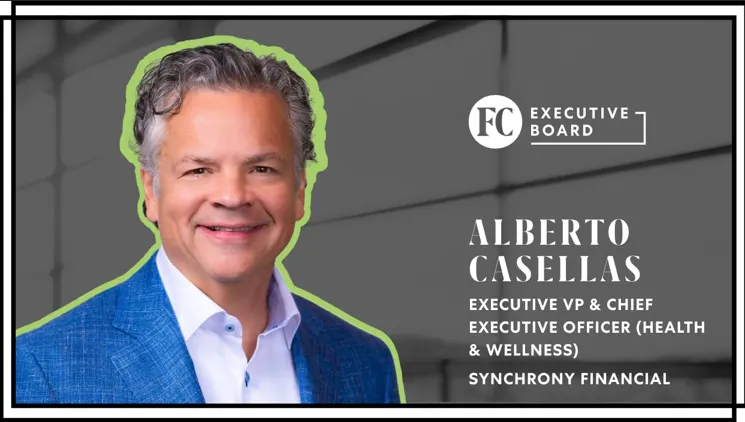
In the finance industry, we should support consumers and healthcare providers with resources to raise awareness of financing solutions and help encourage clearer, more proactive financial conversations.
With ongoing economic uncertainty and rising healthcare costs, many consumers find it challenging to pay for healthcare. According to KFF data from May 2025, 44% of “U.S. adults say that it is very or somewhat difficult for them to afford their health care costs.”
I recently learned that only around “half (54%) of U.S. adults say they know a great deal or a fair amount about personal finances.” This data point reinforces the essential role that those of us in the financial services industry play in ensuring consumers understand not only the options available to them but also how these financial solutions work.
Now is the time to invest in supporting consumers with clear, accessible, and tangible financial education and resources. To set a new standard for consumer credit education across the finance industry, we must work toward establishing better support systems for navigating health and wellness care. The transparency and resources we provide consumers will shape their future.
Subscribe to the Daily newsletter.Fast Company’s trending stories delivered to you every day
Privacy Policy
|
Fast Company Newsletters
So, how can we work together to make this vision a reality? First, it’s important to go deeper to understand how financial preparedness is an aspect of public health. Then we’ll explore how financing support and educational resources can make a true impact. Let’s dive in.
FINANCIAL PREPAREDNESS IS A MATTER OF PUBLIC HEALTH
Consumers are increasingly taking on more financial responsibility for healthcare services in light of decreasing coverage, such as for prescription medication. Insurance and healthcare savings accounts may not always cover all the out-of-pocket costs for healthcare services. This may impact the public’s overall health due to delayed health and wellness care.
Research conducted by my company that was published in 2023 revealed that 52% of surveyed consumers “struggle to pay for out-of-pocket medical expenses.” Another finding was that “53% report delaying or pushing off medical treatments due to expenses or out-of-pocket costs.” Additionally, “76% of consumers would pursue additional medical services if they had better ways to pay for them,” and “40% describe deciding how to pay for out-of-pocket medical expenses as stressful, frustrating, challenging, confusing.”
These statistics inspire me to find additional ways to help consumers pay for care.
According to the American Medical Association (AMA), “Alternative payment models (APMs) are a key approach to achieving value-based care by providing incentive payments to deliver high-quality and cost-efficient care for a clinical condition, a care episode or a patient population.” When consumers have additional ways to pay for care, it benefits both consumers and providers.
But there’s still a long way to go. In research by my company that was published in 2023, 59% of surveyed consumers indicated that they feel that their healthcare providers don’t offer enough payment options for paying out-of-pocket medical costs. This highlights the need for clearer communication around financial options between providers and consumers so that consumers can pay for the care, services, and products they want.
advertisement
In the finance industry, we should support consumers and healthcare providers with resources to raise awareness of financing solutions and help encourage clearer, more proactive financial conversations.
MEETING THE NEED FOR INCREASED TRANSPARENCY
Today, technology and online tools make it possible for consumers to take proactive measures to avoid unexpected care costs and help clarify their financial responsibility for their care.
Before choosing a financial solution to pay for their care, consumers should understand all the payment options available to them. This can include ensuring insurance is maximized, evaluating the value of using a healthcare spending account or flexible spending account, and confirming eligibility for subsidized care or financial assistance. Once these options have been assessed, and if financial support is still needed, then consumers can investigate promotional financing.
Providers should clearly define promotional financing. It’s a vital step to help ensure consumers have an accurate understanding of financial obligations before they open an account. Though many patients might already be familiar with deferred interest, providers must still equip their patients with information they can reference before making any commitments. These discussions allow consumers to fully understand how to utilize financial solutions in ways that best support their financial well-being.
In addition, consumers may not be aware of the latest planning tools, like procedure and payment calculators, that can help them estimate procedure costs and monthly payments with promotional financing. The ability to anticipate care costs based on local provider trends can be extremely helpful to consumers and encourages transparent financial conversations before care begins.
LOOKING TO THE FUTURE
For both consumers and providers, financial obligations for healthcare services can be a daunting subject to approach, but it will become more essential as time goes on if rising costs continue to impact consumers’ decisions to delay care.
In the finance and healthcare industries, our goal shouldn’t be to just provide consumers with financing options. Rather, it should be ensuring consumers are knowledgeable about their healthcare financing options and how they work to help them make more informed and confident decisions when they want to finance their care.
Beto Casellas is the EVP and CEO of the Health & Wellness business at Synchrony, a premier consumer financial services company.



